Near Fields, Norton + Yates, 2017

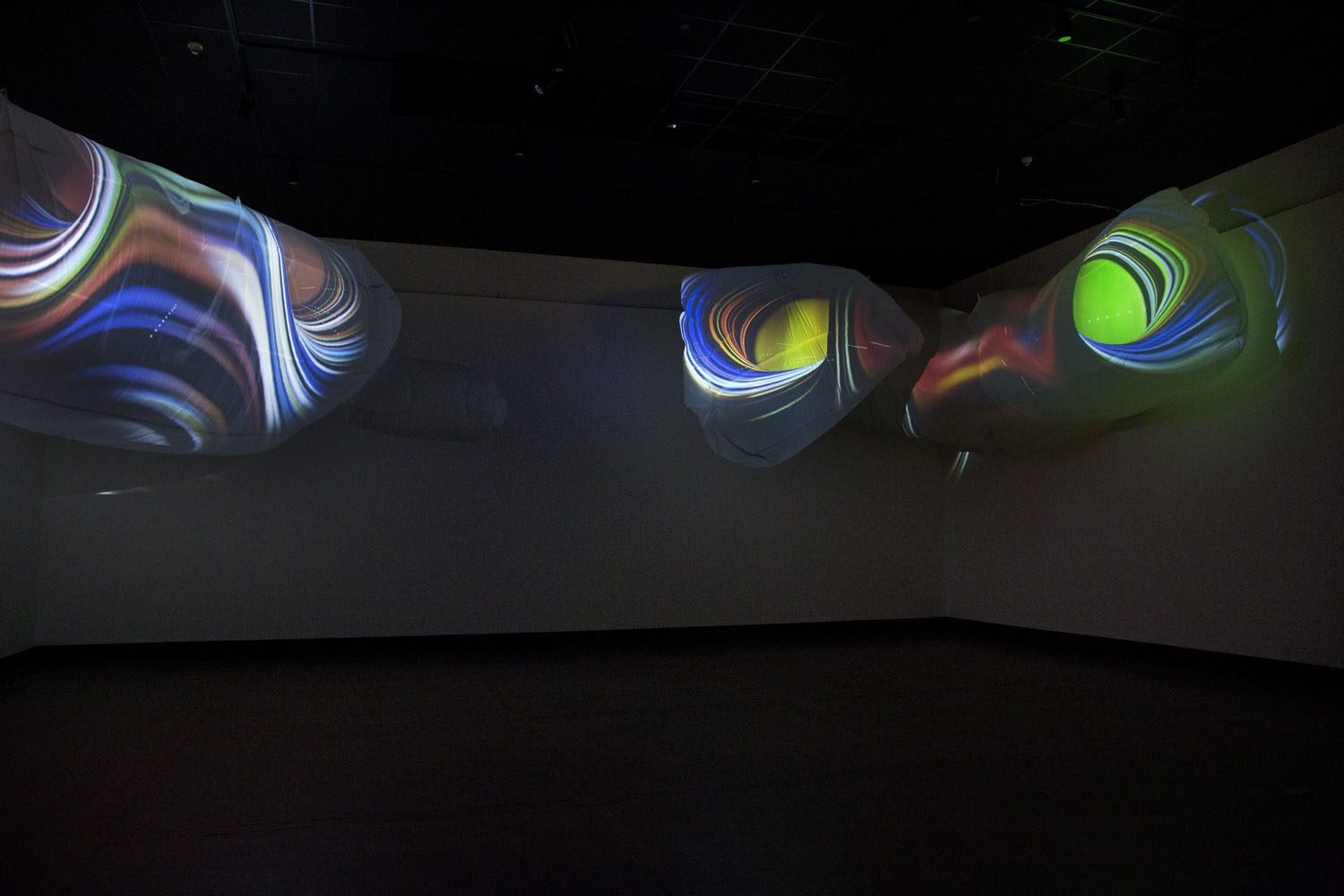
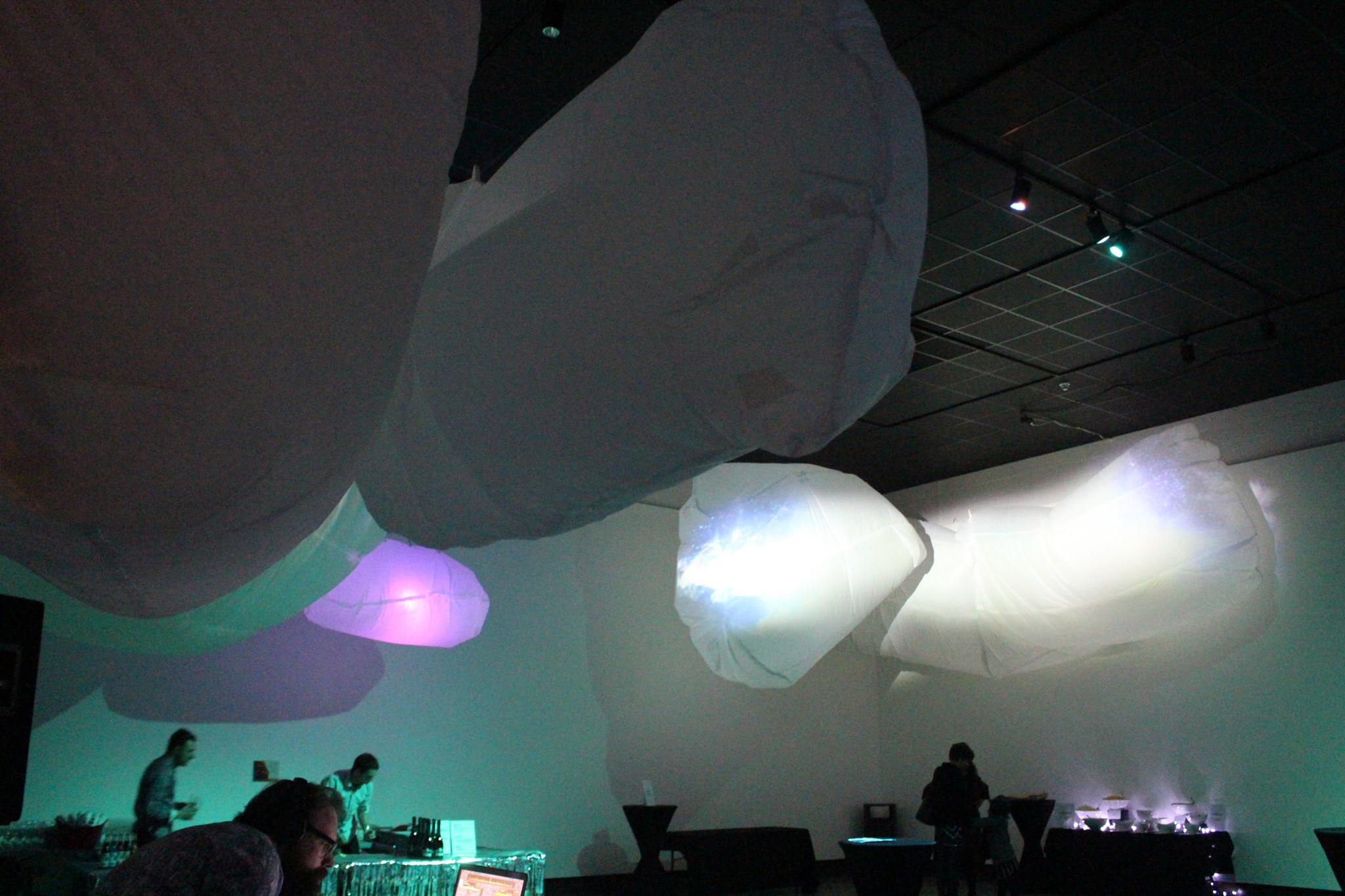
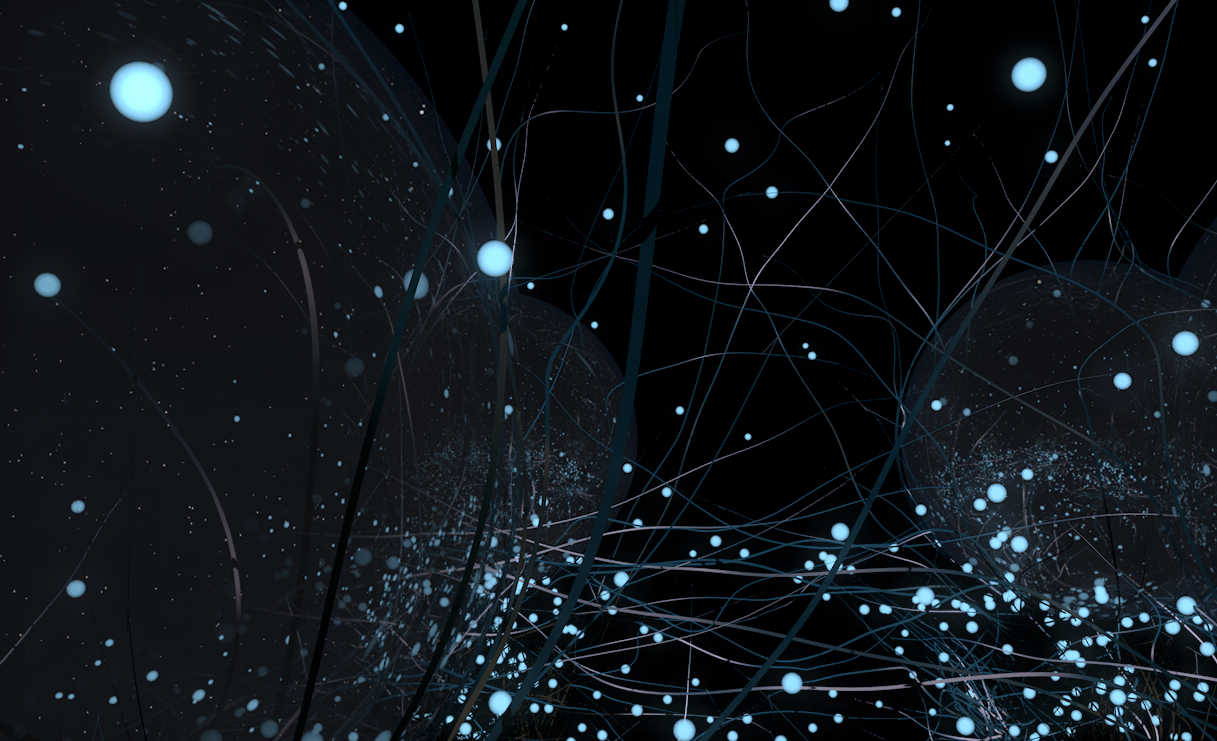
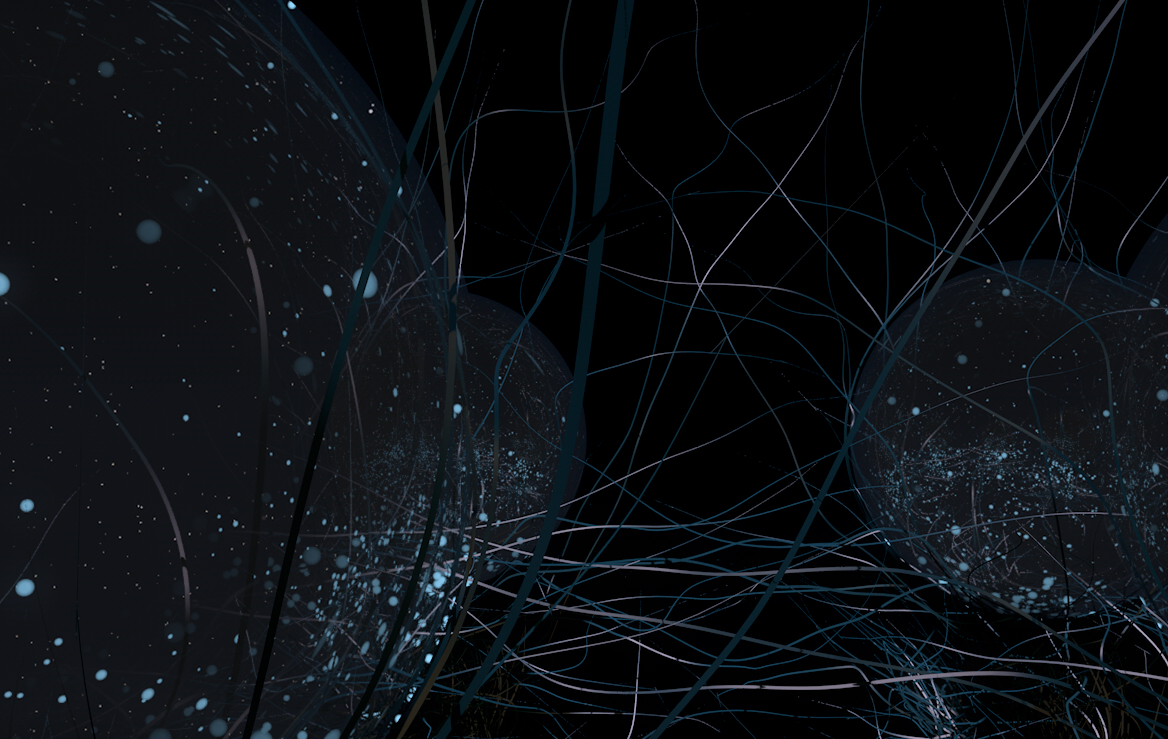
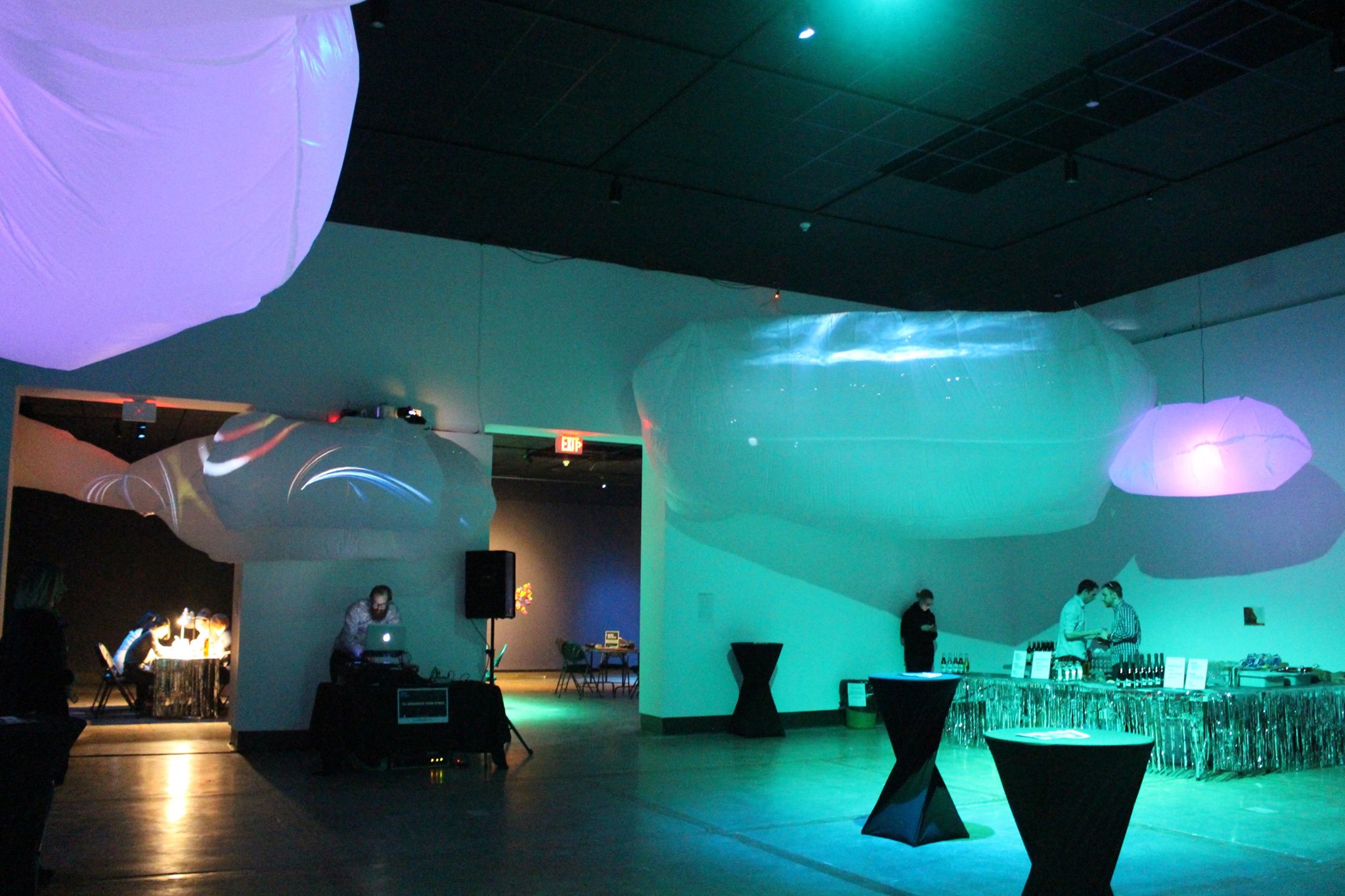
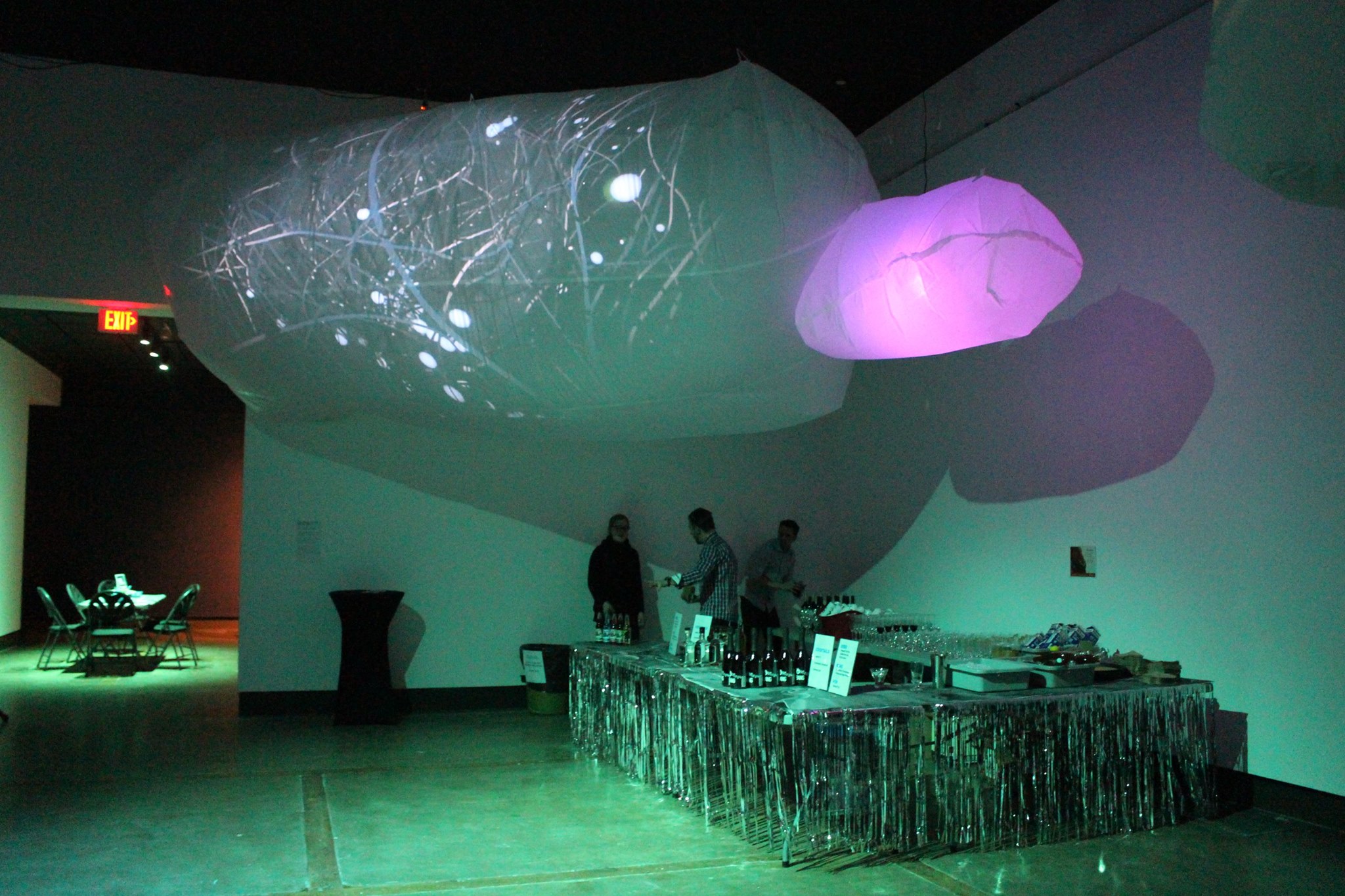
Made in collaboration with musician and visual artist Steph Yates and commissioned by the Kitchener-Waterloo Art Gallery, Near Fields delves into the themes of transmission, translation, and transduction, as a working methodology and as a means to explore communication technologies, the practice of visualization in physics, including recent simulation fields within a vacuum (of nothing). Near Fields also “examines how, from the early days of radio-wave transmission to the now ubiquitous Bluetooth technology, near-field communication has redefined how we understand collective experience.” Near field communication is a technology that allows devices such as debit cards, smartphones and tablets to communicate with each other without touching when in close proximity. Near Fields is an amorphous environment positioned in the heights of the gallery space above the viewers, where animations of pooling luminous, liquid and gaseous substances are projected onto the surfaces of inflated plastic forms. The mercurial and nebulous substances draw upon celestial, molecular, oceanic, synaptic and neural imagery. The inflated forms are modular, positioned at different vertical levels. The structures were formed with a lightweight plastic, inflated by discreetly positioned 12V DC computer fans. The fans were controlled by an inaudible audio signal embedded within the video content. The fans turn on and off throughout the duration of the multi-channel video loop, causing a gentle undulation that allows the environment to subtly change shape throughout the event. The synchronization of the multi-channel video signals and fans create the appearance of the substance filling a cloud like form, overflowing and spilling into another form at a lower height, as a tiered structure.
The title’s immediate reference to near field technology is direct, but while also alluding to quantum field theory. David Tong, a theoretical physicist, explains in a 2016 lecture at the Royal Institution how our established understanding of particles, dating back to Democritus, 2500 years ago, is shifting with field theory. “The best theories we have tell us that the fundamental building blocks of nature are not particles, but something much more nebulous and abstract. The fundamental building blocks of nature are fluid-like substances which are spread throughout the entire universe and ripple in strange and interesting ways. That's the fundamental reality in which we live. These fluid-like substances we have a name for. We call them fields […] So a good picture to have in your mind is fluid, which ripples and sways throughout the universe.” Tong further details that particles, more specifically electrons, are bundles of energy formed in the ripples and waves of the electron fluid (the electron field) that fills the universe. “Just like the waves on the ocean all belong to the same underlying ocean, the electrons in your body are ripples of the same field as the electrons in my body.” This concept of a responsive, undulating connective tissue informed much of the animated imagery that we created for Near Fields. Tong’s unifying oceanic metaphor called to mind concepts put forth by theoretical physicist and feminist scholar Karen Barad regarding boundaries and the relational effects, what she has expressed as intra-activity. “Bodies are not objects with inherent boundaries and properties; they are material-discursive phenomena. ‘Human’ bodies are not inherently different from ‘nonhuman’ ones. […] All bodies, not merely “human” bodies, come to matter through the world’s iterative intra-activity - its performativity. This is true not only of the surface or contours of the body but also of the body in the fullness of its physicality, including the very atoms of its being.” (Barad, 2007) In lieu of interactivity, wherein discreet bodies enact linear paths of causality, ‘intra-activity’ posits that ‘individuals exist because of the existence of given interactions: and, furthermore, that even matter exists as a phenomenon, i.e. as the materialization of relationships.’ (Barad, 2012) In consideration of this in regards to our relationship with technology, physicist Ursula Franklin’s 1999 text, The Real World of Technology comes to mind, as Franklin writes, “Our language is poorly suited to describe the complexity of technological interactions. The interconnectedness of many of those processes, the fact that they are so completely interrelated, defies our normal push-me-pull-you cause-and-consequence metaphors. How does one speak to something that is both fish and water, means as well as end?”